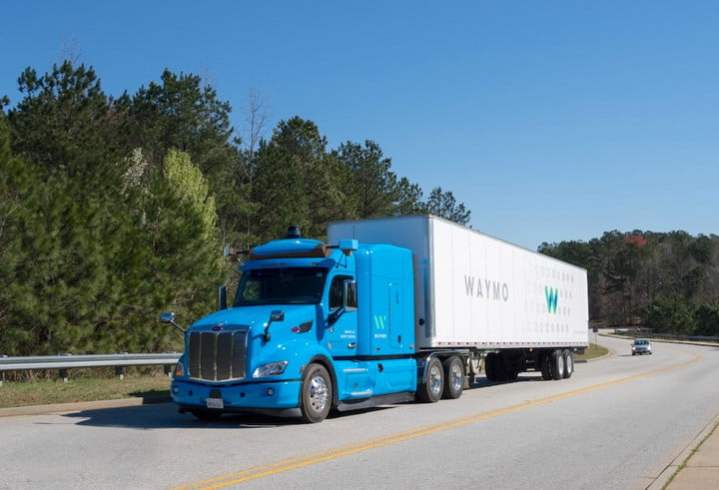
Six years after launching its autonomous-truck program, Waymo has said it’s decided to focus more on developing its ridesharing ambitions using its self-driving cars and minivans.
The California-based, Alphabet-owned company said its decision to effectively put autonomous trucking on the back burner is down to the “tremendous momentum and substantial commercial opportunity” that it’s seeing with the pilot ridesharing service it launched in Arizona in 2018 before taking it to several other states. Customers involved in the program can use an app to call a Waymo driverless car in the same way they would book an Uber.
“With our decision to focus on ride-hailing, we’ll push back the timeline on our commercial and operational efforts on trucking, as well as most of our technical development on that business unit,” Waymo co-CEOS Tekedra Mawakana and Dmitri Dolgov said in a blog post shared on Wednesday.
Waymo will continue its partnership with Daimler Truck North America with the aim of advancing the technical development of an autonomous truck platform, the pair confirmed.
The company is continuing to work on developing Waymo Driver — the autonomous software and hardware that powers the Waymo vehicles — with improvements carried across to its pared-down trucking efforts.
Waymo began tests of its hands-free Class 8 big rig in Arizona in 2017 before continuing trials in Atlanta, Georgia, the following year. Its collaboration with Daimler started in 2020.
Mawakana and Dolgov said that while they see a “significant future commercial opportunity” for its trucking solution, it currently sees more value in “laser-focusing on ride-hailing.”
While it hopes to make a go of ridesharing with a widespread commercial launch of such a service, regulators still need to be convinced of the safety of the vehicles and of their ability to competently handle a wide range of scenarios on public roads.
As for the future of self-driving trucks, while driverless-vehicle leader Waymo may be easing off, a slew of other companies — Volvo, TuSimple, and Mitsui among them — are continuing to work on bringing autonomous technology to the larger vehicles.
Editors' Recommendations
- Waymo robotaxi attacked and set on fire in San Francisco
- Beleaguered robotaxi startup Cruise lays off quarter of workforce
- Cruise woes prompt production halt of fully driverless van
- Dubai Police to deploy driverless patrol cars with AI smarts
- Waymo expands robotaxi service area in San Francisco

